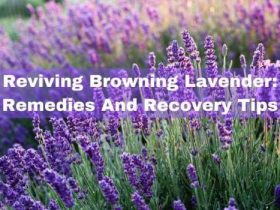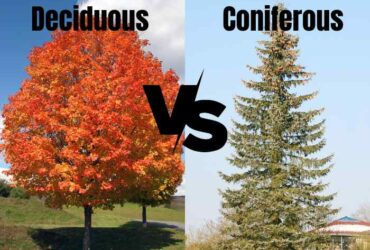Begonia Melanobullata is a rarely found species native to Northern Vietnam. This unique houseplant has green leaves that are covered in Milano (raised black) and bullae (cones) that look like spikes that are not too sharp to touch. Single orange and white hair grow out of each spike.
Begonia Melanobullata was discovered in 2015, but its unique characteristics made it very popular in no time.
This article focuses on Begonia Melanobullata plant care, so let’s discuss its major characteristics.
CHARACTERISTICS OF MELANOBULLATA BEGONIA
This blossoming plant belongs to the Begoniaceae family.
Begonia Melanobullata is similar to Begonia ferox as they have similar characteristics. But the first one shows dark-colored bullate from a young age.
While Begonia ferox requires time to develop and get mature.
Let’s discover the unique characteristics of Begonia Melanobullata.
When you buy it from the nursery, it comes in a pot and is usually 25 cm tall.
In its native environment, it sticks to limestone precipices and rock holes.
With its unique foliage, it possesses leaves that are green in color.
It is found in over 2000 varieties and can survive inside and outside.
Let’s move to its care guide!
BEGONIA MELANOBULLATA PLANT CARE GUIDE

As described earlier, it survives inside and outside in full sun but requires maintenance.
Let’s explore the factors that influence the plant’s growth.
Soil
Begonia likes well-drained soil that is slightly acidic with a ph of 5.5. To prepare the best potting mix for your plant’s growth, mix two parts of peat moss: perlite, vermiculite, kanuma bonsai soil, and 0.5 part of sphagnum moss.
Pot
Do not keep the plant in the same pot you bring from the nursery. Replace its pot with one size bigger than that. But if you’re growing a little cutting, you may use a 4 5- inches pot with a drainage hole.
Other than the pot, you can also use the basket to grow begonia. It does not grow taller, so it does not get too deep with roots.
Watering
It absorbs water from the soil and air. If you live in an area with high humidity, then no need to water the plant until the soil completely dries out.
But if the weather is dry in your area, consider watering your Melanobullata often.
Tip: When the top 2 to 3 cm of the soil is dry, you should water your plant.
Fertilizer
The plant survives on the nutrients it absorbs from the soil naturally. So, the application of fertilizer depends on the growth of the plant.
If the growth is slower, you should apply diluted fertilizer seldom.
Remember: Do not apply fertilizer during the winters, as winters are usually a dormancy period for the plant.
Light And Humidity
As Begonia can be grown inside and outside, it services varying light conditions.
You may place it under low to medium direct sunlight for better growth.
It loves humidity which is why native to areas where humidity is 100%.
But don’t worry; you can still grow it in your garden or inside. Use a humidifier or pebble to try to adjust humidity requirements.
Temperature
To take Begonia Melanobullata care, you should maintain intermediate to warm temperatures for better growth.
The optimum temperature for its growth ranges between 20 to 25 degrees centigrade.
REPOTTING OF BEGONIA MELANOBULLATA
You can repot your plant after 2 to 3 years of planting it. The begonia is a slow grower and should be repotted when it outgrows its pot.
Tip: Repot the plant during the early spring or winter season.
Ensure the pot you place the plant after is bigger than the previous one.
HOW TO PROPAGATE BEGONIA MELANOBULLATA
Begonia can easily be propagated by stem cutting. Here’s the simple procedure that you can follow step by step to propagate your plant.
- Using garden shears, cut a few stems from the plant.
- Make sure you are taking cuttings from a healthy plant.
- Plant these cuttings in well-drained soil.
- Water the cuttings thoroughly and place them under light to grow.
The cuttings will establish roots within a few days.
BEGONIA MELANOBULLATA COMMON PROBLEMS
Now, let’s talk about the common problems of the melanobullata plant.
Pests
Begonia is prone to many insects and pests that can harm it. They include spider mites, aphids, whiteflies, and mealybugs.
If these pests attack your plant, they can result in wilting, stunted growth, and death of the plant.
You can use pesticides or other biological controls if your plant is infected.
Other common problems of begonia melanobullata include:
Leaf Spot
Leaf spot is a bacterial infection that occurs in begonia plants when they’re overwatered.
If you observe that your plant’s leaves have started turning yellow, it can result from bacterial infection.
So what can you do to prevent it? You can cut the infected part and avoid over-watering it.
Powdery Mildew
Fungal attacks on the plant cause this disease. The leaves of your plant are covered with a white substance.
Sometimes, leaves turn yellow and fall off the plant.
If the disease is spreading, you should apply fungicide immediately.
Stop spreading diseases between plants!
Do you know that the disease your plant is suffering from may be because you spread it? Shocked? Let me tell you how!
You must use clean tools while dealing with multiple plants at a time.
Also, if a material of the plant is diseased, dispose of it properly.
Tip: Sterilize your pruning tools when needed, and don’t use the diseased plant’s soil to plant a new one.
WRAP UP!
This article covers begonia melanobullata, its characteristics, and how to take care in detail, that includes pot, soil, temperature, fertilizer, humidity, and more!
The article also sheds light on repotting begonia and how to propagate it successfully.
As many of you might be experiencing problems with your plant, it also covers the common problems with begonia.
Have you got more questions related to begonia melanobullata? Here’re the answers to the most frequently asked questions.
FREQUENTLY ASKED QUESTIONS
Do begonias like sun or shade?
Begonias survive both sun and shade. The ideal condition is low to medium sunlight during the day.
Do begonias like a lot of water?
Begonias do like humidity, and watering them when the soil gets dry is just fine.
Can begonias be grown indoors?
Begonias are easy to take care of and can easily be grown indoors.
Follow @kitchenandgardening for more!














Leave a Reply